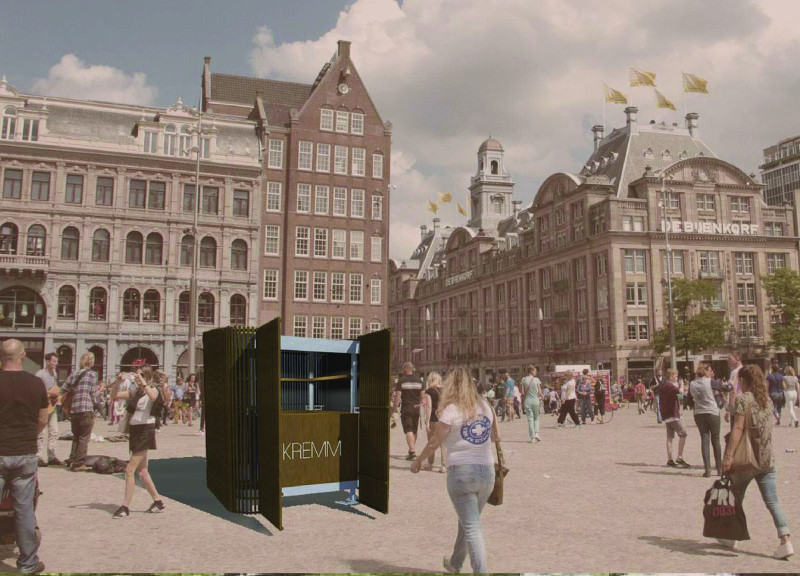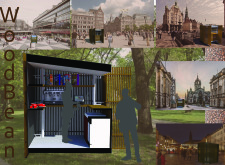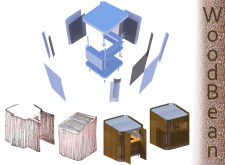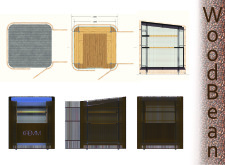5 key facts about this project
At its core, WoodBean represents not only a place to enjoy coffee but also serves as a gathering point for social engagement. It invites individuals to pause amidst their daily routines, fostering moments of connection and conversation. The kiosk's compact form allows it to adapt to various locations, making it a versatile asset to urban planning and community development. Its user-centric approach ensures that it meets the needs of both the vendor and the customer, enhancing the overall experience in public spaces.
The architectural design incorporates a carefully curated selection of materials that contribute to its inviting character. Wood is prominently featured, evoking warmth and familiarity, while metal provides structural support and durability. Glass elements create transparency, allowing for visual connectivity between the kiosk and the surroundings. This intentional choice of materials not only supports a sustainable ethos but also emphasizes the project’s aesthetic narrative, effectively bridging the gap between the natural and built environment.
The unique design approaches employed in WoodBean include its modularity and adaptability. The kiosk can be easily assembled and disassembled, making it suitable for different urban contexts and seasonal shifts. This flexibility allows the project to respond to the dynamic nature of urban life, enriching its surrounding areas regardless of the changing seasons or specific events. Furthermore, the interior configuration prioritizes functionality, ensuring that vendors can operate efficiently while maintaining an open connection with customers. This design strategy facilitates engagement and enhances the social atmosphere of the space.
Another key aspect of the WoodBean project is its environmental consideration. By incorporating sustainable materials and energy-efficient features, such as the potential for solar energy integration, the design reflects a commitment to reducing its environmental impact. This aligns with current architectural trends that prioritize ecological responsibility, contributing to a broader conversation about sustainability in urban settings.
Overall, the WoodBean project is a comprehensive architectural design that skillfully addresses the needs of urban life. Its functionality as a coffee kiosk, combined with its attention to materiality and community engagement, establishes it as a significant addition to public squares. Through its unique design strategies and sustainable practices, WoodBean not only enhances everyday experiences but also encourages an appreciation for the value of well-designed public spaces.
For more insights into the WoodBean project, including architectural plans, sections, designs, and ideas, readers are encouraged to explore the project presentation. Delving deeper into its elements will provide further understanding of how this architectural endeavor contributes to community life and urban experience.


























